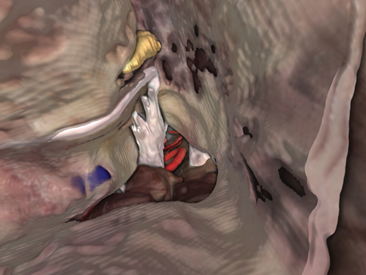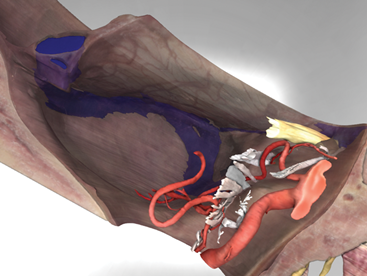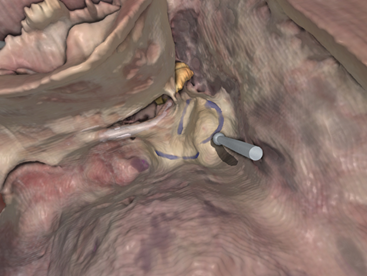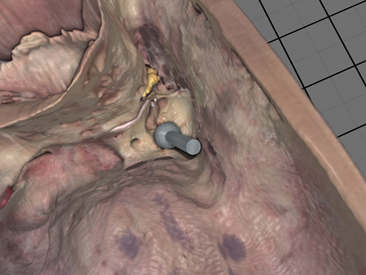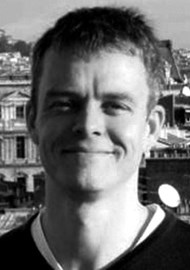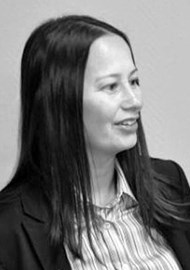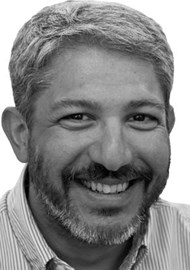The VES2 virtual reality bone drilling simulator is ready and it is freeware! After a long development period we are now able to invite everybody to try the simulator and use it for training, for a inner ear anatomy, and for surgical experimentation.
The story
The Visible Ear Simulator (VES) is a research joint venture between the Alexandra Institute (AI) and the Danish National Hospital (Rigshospitalet). The project was started by Mads Sølvsten Sørensen (Professor, MD, DMSc) who created the Visible Ear data set based on cryosections. This data is high fidelity and contains the true colours of the anatomy. It was used by computer scientist Peter Trier Mikkelsen from the Alexandra Institute, to develop the first version of the VES.
The main idea behind the project has always been to create a realistic and versatile simulator based on standard pc hardware to make it affordable and available to as many as possible. It has been a project goal to provide a safe environment where failures are allowed, and a training system you can even bring to the comfort of your home to support continuously repeated training until automation of skills can be achieved.
In 2009 the first version of VES was released and since then the simulator has been translated to several languages and is used all over the world. In many places the access to cadaver heads, for temporal bone drilling is limited. So the use of a virtual temporal bone has proven to be a good addition to the traditional wet training. However, VES was limited in terms of visible quality and the resolution of the temporal bone was not as high as desired. Therefore we have continued to develop VES2 and we are very proud to announce the release of what we think is a really good simulator in terms of look and feel. To our knowledge this is the only simulator that features the true colours of the middle and inner ear.
VES2: CP angle exposed.
VES2: Posterior fossa vessel and nerves.
VES2: Posterior tympanotomy and SCC bluelining.
VES2: Translabryinthine approach.
What is new?
VES2 has been redesigned to deliver a high level of graphical and haptic fidelity. We have carefully created a system that can make gigabytes of histology data come alive with a high resolution volumetric bone structure that can be drilled by three different drill types. VES2 may also present a complete anatomical view of the main structures of the inner ear, in which the three-dimensional relations of the segments can be explored interactively. Yet the general interface and tutorial functions have been revised to make it more simple and effective to use.
The simulator features basic tutorials in the art of temporal bone drilling, and we have created a simple greenlighting system where the student follows a step-by-step instruction, and the bone that should be drilled away is coloured green. We will release more tutorials in the future and we would like to create tutorials based on the knowledge and ideas of VES users.
The key point is that we now have a modern and extendable platform for all future developments, and we have a lot of ideas just waiting to be put to the test. To spark the interaction with the users we recently created a forum where everybody is invited to contribute to the project and make suggestions for cool features and research topics.
For instance we are working with Professor Thomas Lenarz and his group in Hannover that will help us create more data based on micro CT, CT, MRI and histological images.
What do you need?
The simulator pushes the graphics to a limit so you will need a powerful Windows pc with a GeForce GTX graphics card to be able to install and run the programme. To really feel the interaction between drill and bone, a force feedback device is needed. Currently we support the Geomagic Touch.
Many different PC and GPU brands can meet these requirements, but to be sure that you have the right type of equipment please visit the VES website for updated information.
Contributors to Spotlight on Innovation Peter Trier Mikkelsen and Prof Mads Sølvsten Sørensen
Acknowledgement
This project was funded by the Oticon Foundation, Oticon Medical and MED-EL. Thanks to their support the simulator is a public academic freeware project.
Please visit our website for more information and download: https://ves.alexandra.dk

